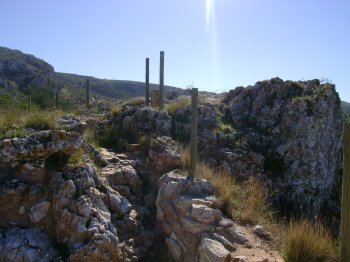Explore the best places
Results for Forte in Portugal
Castelo de São Filipe / Forte de São Filipe
- heritage
Estrada Castelo de São Filipe
2900, Setúbal
Located about 1 km from Setúbal, the fortress stands overlooking the sea. Without any towers, the fortress contained a group of buildings, most notably the governor's residence and the church. The interior of this church is covered with tile panels dating from 1736, depicting scenes from the life of St. Philip.
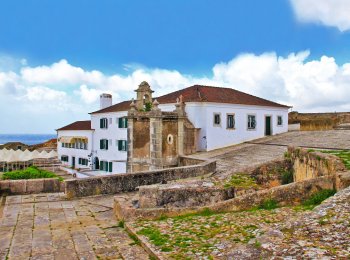
Forte da Crismina / Bateria da Crismina
- heritage
Estrada do Guincho - EN247
2750-642, Cascais
A fortress rebuilt btween 1642/43, currently ruined. It had a rectangular plan and there are still vestiges of the walls. Inside, one can view the paving stones.
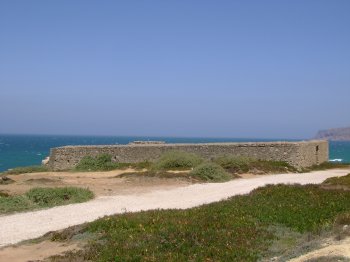
Forte de Nossa Senhora das Mercês de Catalezete
- heritage
Avenida Marginal
2780, Oeiras
In 1762, with the purpose of strengthening the defenses of the fortress of São João da Barra, proceeded to the construction of a battery consisting of a parapet of masonry to which, years later, added a wall of stone and lime, closing the enclosure. Badly damaged by successive attacks, began to be leased to private individuals. On the occasion of the construction of the Marginal, in 1942, was restored. In 1955 was obtained the evacuation of premises and went on to work as a summer camp.
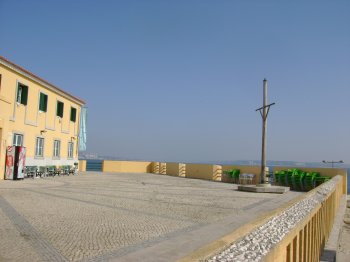
Forte de São Luiz Gonzaga (vestígios)
- heritage
Baixo
4930, São Pedro da Torre
Traces of a strong military architecture, 17th century, bastions in clod of polygonal plant, with outer moat and covered path. Is one of the strong in "architecture of the Earth" still subsisting in Portugal, being totally built in clod (mixture of Earth, clay, pebbles and stone uvula), without any trace of masonry. Featured ample dimensions, with tents to barracks, stables and warehouses, and can accommodate 2000 infants and 500 horses. Currently covered by pine forest

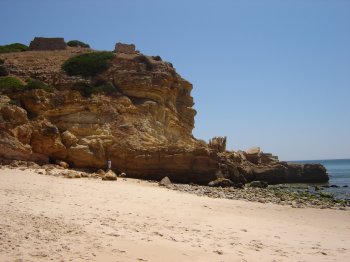
Forte ou Castelo de Santiago da Barra
- heritage
Rua de Santiago da Barra
4900-357, Viana do Castelo
It is believed that this place has been inhabited since prehistoric times, as indicated by numerous findings. The first fortification would date from the reign of Dom Afonso III, although the most likely date is from the 15th century. During the reign of King João II and/or King Manuel I, the medieval castle and the Torre da Roqueta were rebuilt. In 1700 and 1799, during the reign of Philip II, it underwent further repairs and reconstructions. Attesting to these works, a rococo royal coat of arms stands out over one of the main doors.

Ruínas do Forte Novo de Cascais
- heritage
Sobranceiro à Pedra da Nau
2750-641, Cascais
Located between Santa Marta and the Boca do Inferno, it is located on a cliff by the Pedra da Nau. It is currently ruined and only a sentry-box can be identified.
Ruínas do Forte ou Castelo de Alvor
- heritage
Largo do Castelo
8500, Alvor
These ruins are all that is left from an Arab fortress which was used to defend Lagos bay. The castle was conquer in 1189 by D. Sancho I but later returned to the Arabs power and afterwards, in 1250 D. Afonso III reconquested it. These are the remains after the destruction provoked by the 1755 earthquake.

Forte de Santiago do Outão / Farol do Outão / Hospital Ortopédico do Outão
- heritage
EN379
2900, Outão
Fort located at the foot of Serra da Arrábida. Its tower is dated from 1390. In 1572 it suffered enlarging works and was completely remodelled after the Restoration War. The chapel, covered with glazed tiles from the XVIII century, is worthy of notice. In the XIX century it was a prison and later the holydays residence of King D.Carlos and Queen D. Amélia. In 1909; it became a hospital for orthopaedic diseases and maintains its function until today.
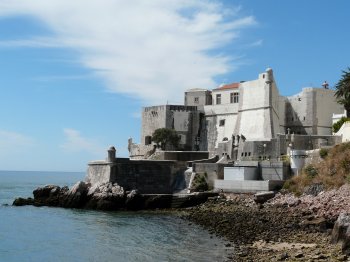
Castro de Pragança / Castro de Rocha Forte
- heritage
Rua 1º de Dezembro
2550, Pragança
Iron Age fortified settlement, semi-buried.
